The article was originally published by Emergence Journal (Sep 2021).
Four times a year, Emergence Journal brings together a curated selection of exclusive stories by great thinkers and practitioners from around the globe about business agility.
Subscribe for Emergence Journal and get a 10% discount using "agileprague" promo code. Read more about Emergence Journal.
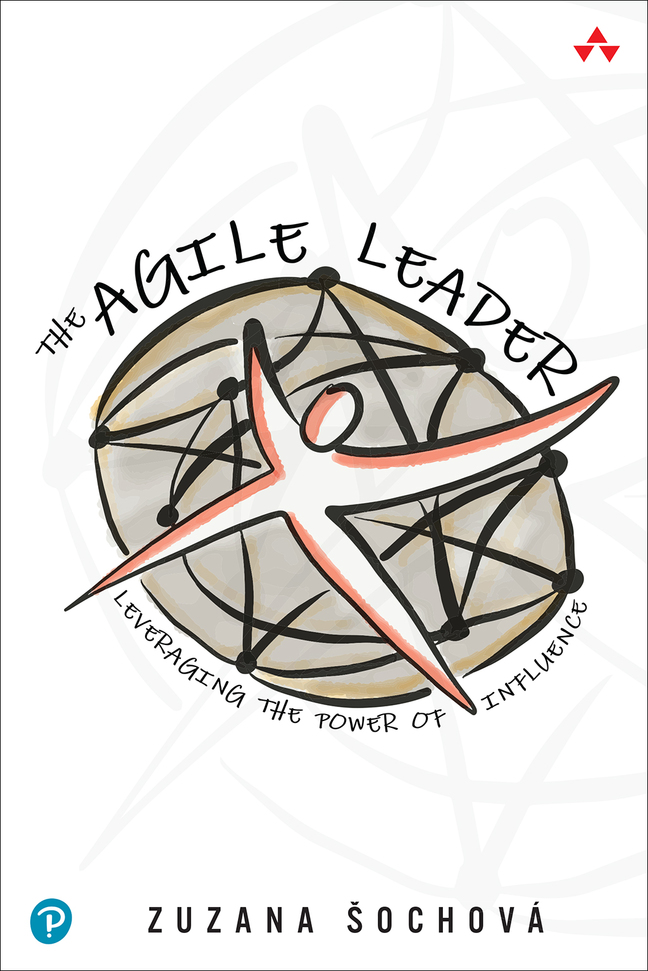 References
References
Zuzana Sochova (2021) The Agile Leader: Leveraging the Power of Influence
Over the past two decades the world has become increasingly volatile, uncertain, complex, and ambiguous – in other words, unpredictable and sort of ugly. The time where organizations could pretend change wasn’t necessary and that all they needed to do was improve their planning process is over. Once businesses accept that they are dealing with VUCA challenges, they realize that Agility at the organizational level is necessary to succeed in such an environment.
“Don’t DO agile, BE agile.”
Such organizations have reached a point on their agile journey far beyond team level frameworks and scaling approaches. Those are well described, and not that hard to apply when there is a strong sense of urgency and desire for change. The real challenge lies in embracing business agility and changing how the organization is structured and designed. People need to stop seeing agile as just another project management practice, and reconnect to the fundamental agile values and principles. It’s not about “doing agile” but “being agile”.
“Trust is a prerequisite for agility, transparency is an enabler, but purpose is the true driving force of agile”
Agile organizations are formed as a network of small autonomous teams. When an organization is not ready for such a level of agility and autonomy, changing processes and structures to build these new autonomous networks only creates chaos. Having the right culture and mindset is essential.
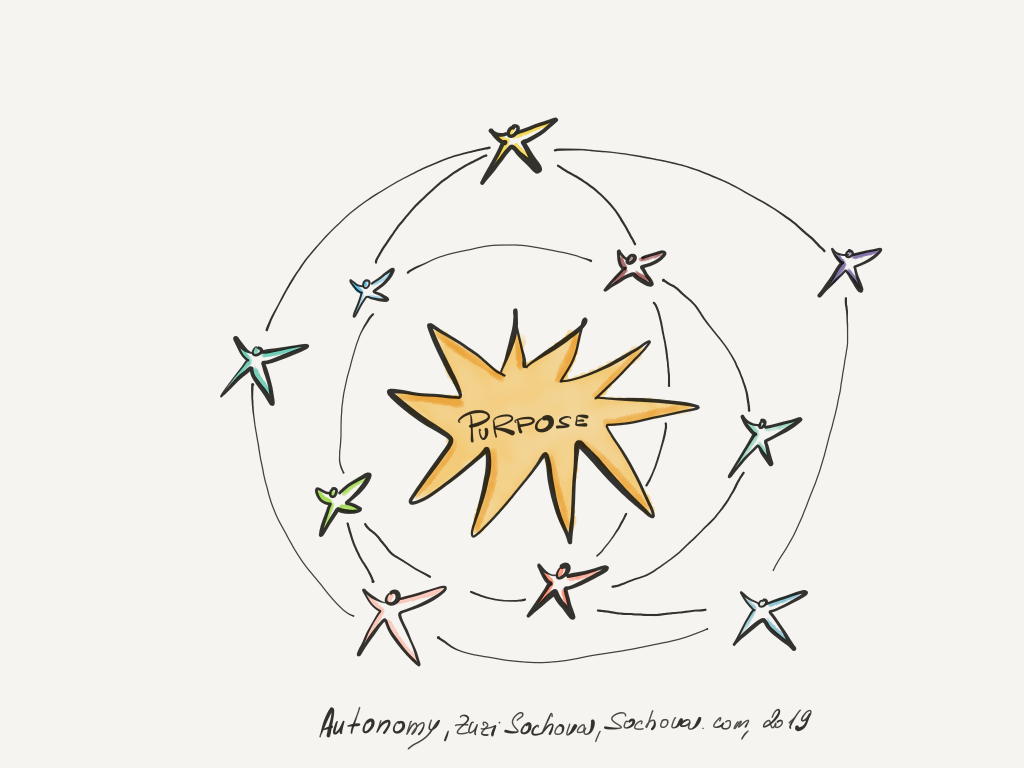 The first step towards an agile mindset is to build trust. It looks simple, but takes time. People need to invest time into building relationships with each other. They must come to know their colleagues outside the work tasks, and see others as people, not just roles. To form team spirit, team members need to experience something significant together.
The first step towards an agile mindset is to build trust. It looks simple, but takes time. People need to invest time into building relationships with each other. They must come to know their colleagues outside the work tasks, and see others as people, not just roles. To form team spirit, team members need to experience something significant together.
How can this be achieved? First, start small and don’t be afraid to be vulnerable. Create a space where team members can share interesting moments from their history, or unusual (but not uncomfortable) facts about themselves. Later, once they are comfortable being open or even exposed, they can discuss their failures, weaknesses, and fears. Eventually they’ll be able to share embarrassing moments, which creates vulnerability.
Second, invest in diverse and accessible forms of teambuilding. There are no limits. Be flexible. Some teambuilding activities can be as simple as lunch together or a videocall. Other times, teams can go out together for a beer, go on a hiking trip, go bowling or boating, join a cooking class, and so on. Be creative when it comes to choosing teambuilding activities. The more diverse activities you do, the more you get to know each other.
Team members should also take some time to reflect on what they know about their colleagues. What are they great at? What are they passionate about? What are their hobbies? How do they behave outside their jobs? And so on. On the other side, team members should ask what people around them are afraid of and how they can help their colleagues feel more self-confident. Great teams are not afraid of conflicts. Once they reach the vulnerability trust level it becomes clear that conflicts are healthy, and that disagreement is a natural element of interaction. This is all useful for achieving productive dialogue, rich with varying perspectives and constructive arguments.
The second ingredient for creating an agile mindset is transparency. Being transparent about what needs to be done, what success looks like, and what to avoid is crucial for any environment, but in agile spaces we often go one step further. Great agile teams create radical transparency where everything is visible to everyone.
It’s true that radical transparency is scary at first. For some people, transparency is a threat as they have built their power and authority around hiding information. Lack of transparency is a weapon which can eventually kill agility as it makes collaboration and self-organization almost impossible. It’s a great friend of hierarchical structures supported by fear and politics. “If I’m the only one who has the information, no one can jeopardize my position.”
In addition, transparency creates anxiety for many people. Naturally, they’ll try to avoid it by brainstorming all the possible reasons why radical transparency is a bad idea. “People will feel overwhelmed by that much information! They don’t need to know everything!” they say.
To start with transparency, people must first have the courage to discuss their situations honestly, be prepared for difficult feedback, and trust that people will help them. People learn by doing, and team members must understand that perfection is not required. Instead, agile is about learning from small failures. Failure is a good thing as it allows people to improve. As such, creating a safe-to-fail environment is critical for agile organizations.
The third ingredient in the mix is purpose. Autonomy without a guiding purpose only creates chaos. The higher the autonomy, the stronger the purpose needs to be to glue it together. This gives everyone the same goal, belonging, identity, the reason for why they are there and where they are heading to.
“Being an Agile leader is not about positional power, but your ability to leverage the power of influence.”
On their agile journey, organizations inevitably realize that to change the culture, change in leadership is also essential. Agile organizations are collaborative, creative, and adaptive networks. They are like living organisms, operating on different principles. They naturally flatten the hierarchical structure, rendering the hierarchical org chart unimportant. They are based on autonomy, self-organization, and empowerment, leveraging the power of self-organization. Instead of hierarchical leadership, they rely on emergent leadership which is not tied to any position but can emerge from different situations and needs on the fly. In Agile organizations, everyone is a leader. Everyone can step up and lead an initiative. If that initiative gains the interest of others, they form a team and support it. Being an Agile leader is not about positional power, but your ability to leverage the power of influence.
“Excellent Agile Leaders have four core competencies: Ability to define the vision, motivate, gain feedback, and ability to influence through themselves, others, and systems.”
Agile leaders are guides for the organization on its agile journey. Everything starts with a dream. Having a passion for something helps create energy. The ability to clearly formulate an appealing vision is the engine of change. The vision is not necessarily linked to a product or business but should be focused on the organization and its purpose.
Before chasing a vision and upending the status quo through organizational change, people should ask: what do we need to achieve? Why is it important? What major differences would it make if we achieved the change? These questions can help determine whether the vision is strong enough to leverage the discomfort caused by changing the status quo. As a test of whether team members are truly invested in the vision, they might ask: if I won the lottery tomorrow, would I still turn up at work to help my team make this vision into a reality? The stronger the vision, the higher the chance of achieving success.
You are a leader, no matter what official position you have right now. Leadership is a state of mind. Share a vision of how different your organization needs to be, and why it is important. Create a sense of urgency. Without it, no change will ever happen.
 The second competency is the ability to motivate and give energy, which is closely related to the vision. If your team has a good vision, they will likely be self-motivated. The ‘carrot and stick’ model doesn’t work in complex environments. Instead, agile leadership builds on intrinsic motivation.
The second competency is the ability to motivate and give energy, which is closely related to the vision. If your team has a good vision, they will likely be self-motivated. The ‘carrot and stick’ model doesn’t work in complex environments. Instead, agile leadership builds on intrinsic motivation.
Agile leaders need to create an environment full of joy, where people can grow, and have enough autonomy to influence things. This allows them to co-create something they believe in and can be proud of. Doing something meaningful is the best motivation you can get.
The third competency of great Agile leaders is feedback – both giving and receiving. While many leaders understand how to give feedback which people can understand and use to improve themselves, great leaders are also open to hearing system-level feedback and learning from it. Giving feedback is hard, but receiving feedback is even harder. How many times have you rejected feedback from your peers, or disqualified their opinions by saying things like: “they don’t understand it”, “They don’t know all the details“, “I know better”. It’s easier that way, isn’t it?
In a VUCA world, where most of the problems involve volatility, uncertainty, complexity, and ambiguity, we need to build different skills. Individuals often struggle to deal with complexity or react to unpredictable and unstable business environments. To solve these issues, we need a higher level of creativity and the sorts of innovative solutions that only a team can accomplish. That’s where the ability to listen to feedback and learn from it is crucial.
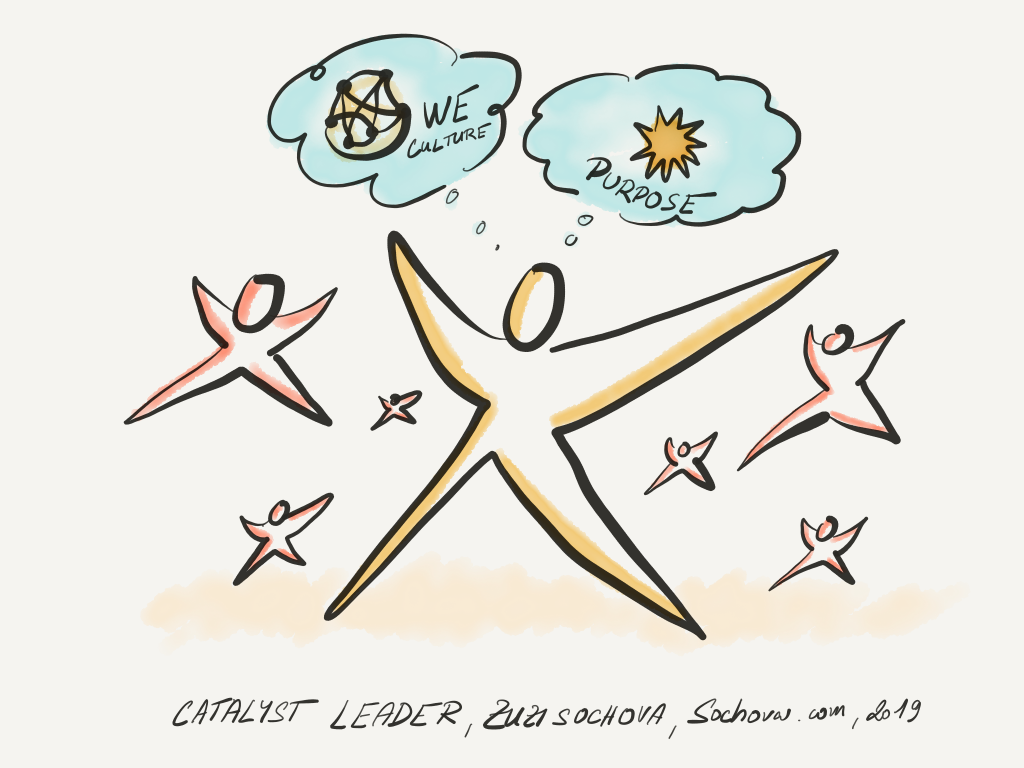 The last competency is the art of influencing complex environments: specifically, to change systems, habits, support and consolidate culture. Agile leadership begins with a change of self, your judgments, values, behaviors, and style of work. Great leaders start with themselves as a role model. They change the way they show up, how they interact with others, and how they can inspire people around them to collaborate, create a team spirit, and become leaders. They can work with the entire system and influence the whole organization and its culture.
The last competency is the art of influencing complex environments: specifically, to change systems, habits, support and consolidate culture. Agile leadership begins with a change of self, your judgments, values, behaviors, and style of work. Great leaders start with themselves as a role model. They change the way they show up, how they interact with others, and how they can inspire people around them to collaborate, create a team spirit, and become leaders. They can work with the entire system and influence the whole organization and its culture.
They are catalysts, creating an engaging environment with high transparency, trust and autonomy. They are good at forming teams and collaborative networks, not just working with individuals. They are efficient when dealing with complex situations and seek out different perspectives from diverse employee demographics when in search of solutions. They create inclusive environments that enhance innovations and creativity. They build trust, are not afraid to be vulnerable, and create safe-to-fail environments. Along their journey they make sure to invest in system coaching, large group facilitation skills, and agile leadership development. They help others to grow.
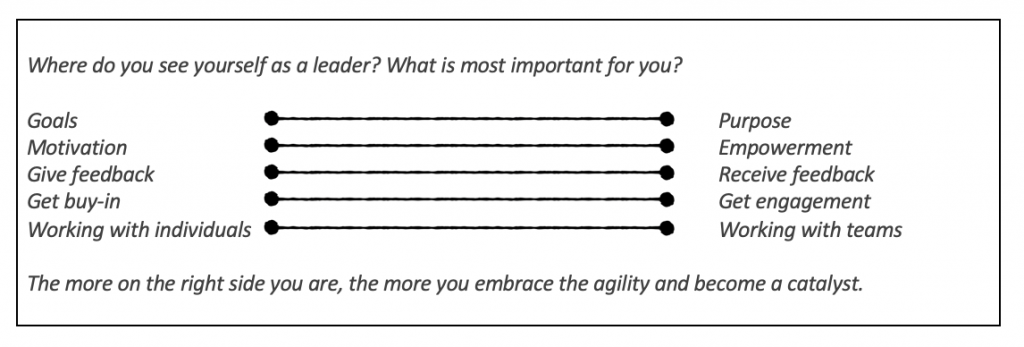
On top of the four competencies, Agile leaders must balance collaboration with decision-making. Even in an agile world you sometimes need to make a decision. While that’s not surprising to most managers, it’s often something which agile coaches struggle with. On the other hand, managers often struggle to collaborate and participate, while agile coaches are usually much better at it.
In an agile environment you need both decision-making and collaboration. Making decisions isn’t hard once you have a clear vision and purpose. Without that clear vision, leaders can become paralyzed by having too many options to choose from. The nature of a complex world makes many of those options look appealing. In truth, they’re all okay, but it’s impossible to know which option is the correct one without trying, inspecting, and adapting.
Again, the ability to hear feedback and learn from it is critically needed as in a VUCA world we can’t know which option is right for our team without experimenting and learning from failures. Agile leaders are also relying on two soft-skills: coaching and facilitation. Both require practice as well as the readiness and humility to step back and accept the fact that you are not an all-knowing expert. Instead, humble leaders use coaching and facilitation to help other people reflect, discuss, and decide what to do. In a complex world, a team is always faster at figuring things out, and coaching and facilitation skills will boost vital team collaboration.
In summary, leadership is a state of mind. All a leader needs to initiate a change in their organization is to have a vision. Positional power isn’t necessary because agile leaders are leveraging the power of influence. They enhance collaboration and build environments full of trust and transparency. They are catalysts. They are good at working with teams and networks, and they encourage people to take responsibility and ownership and become leaders.
When it comes to change, leaders need to change first. In time, the organization will follow.

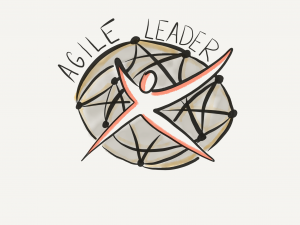





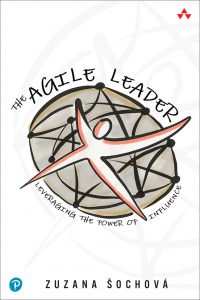
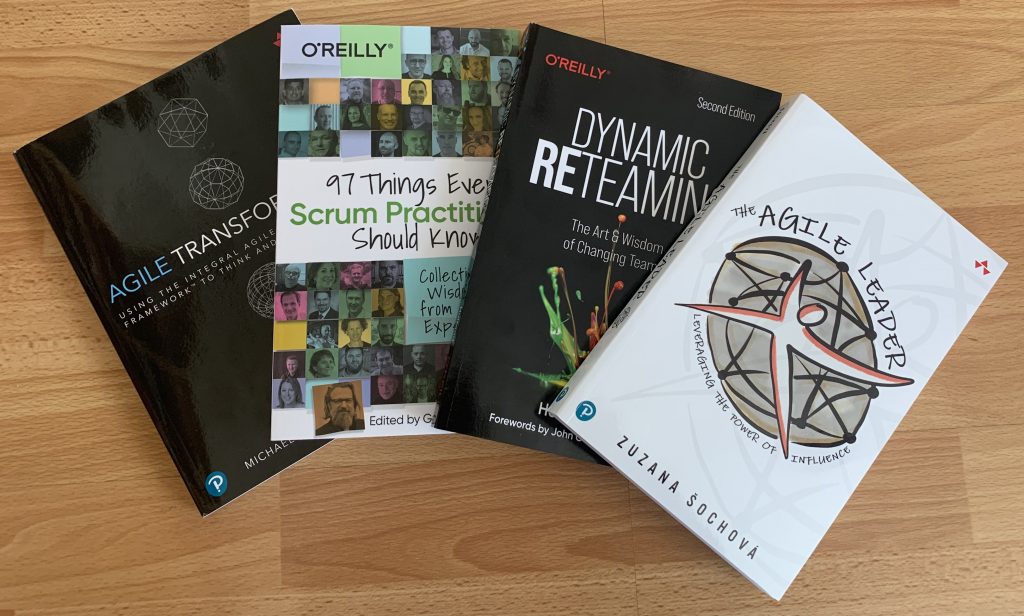
 The first recommendation is a trilogy
The first recommendation is a trilogy 